Dribbling Drills
Did you know that practicing dribbling drills can not only improve your ball control but also enhance your agility and precision in soccer?
Improve your players' attacking skills with these dribbling drills focused on ball control. In the Cone Dribbling drill, set up a series of cones and challenge players to manoeuvre through them while maintaining close control of the ball. For a more advanced drill, try the Zigzag Dribble, where players must navigate a zigzag pattern with quick changes in direction to enhance their agility and precision. These drills are great for developing crucial dribbling skills while also honing aiming abilities in soccer training sessions.
Cone Dribbling
Inside-outside cone dribble: This drill focuses on developing ball control and attacking skills particularly for beginners. Start by placing a row of cones in a straight line, spaced about one yard apart. Dribble the ball using both the inside and outside of your foot as you weave through the cones. This will improve your ability to change direction quickly while maintaining control of the ball.
Figure-eight cone dribble: Aiming to enhance agility and coordination, set up two rows of cones in a figure-eight pattern. Begin at one end and dribble the ball around each cone, following the shape of an eight. As you navigate through this drill, focus on keeping close control over the ball with precise touches.
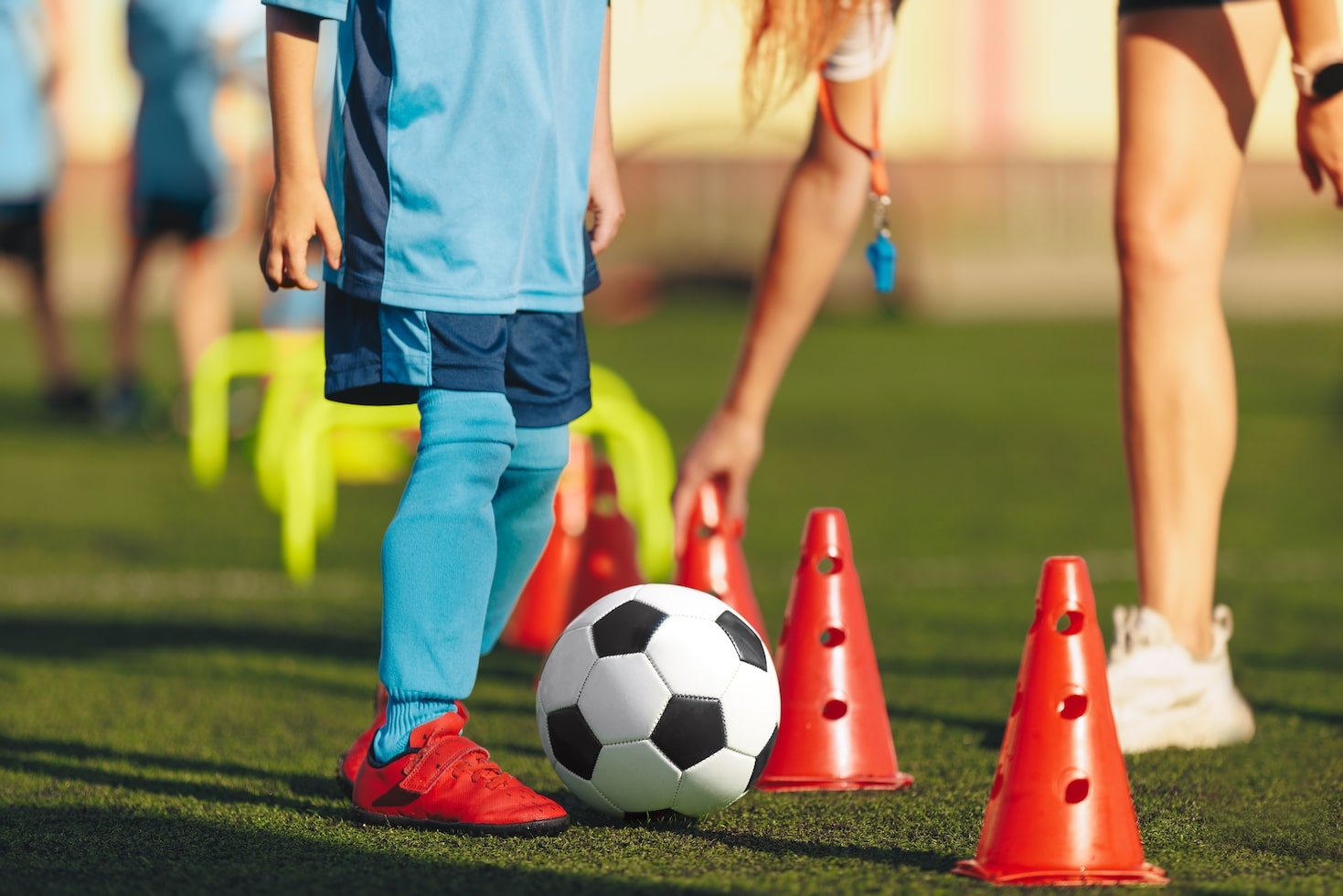
Stop and start cone dribble: This drill emphasizes quick reactions and acceleration. Position several cones randomly throughout an area or field. Dribble towards one cone at full speed before abruptly stopping once you reach it; then immediately accelerate towards another randomly chosen cone in a different direction. Practicing this exercise regularly will help improve your ability to change pace rapidly during games or matches
Three Cone Drill
Speed ladder with cones is a great drill to improve speed and agility in soccer players. Set up a speed ladder on the ground and place cones next to each rung of the ladder. The player then aims to move quickly through the ladder, attacking each cone as they go. This drill not only improves footwork and coordination but also enhances ball control while moving at high speeds.
Slalom through three cones focuses on quick changes of direction and sharp turns. Place three cones in a straight line with about 5-10 yards between them. The player starts at one end and weaves their way through the cones, using quick touches on the ball to maintain control as they navigate around each cone. This drill helps players develop agility, balance, and precision when dribbling past opponents.
Backwards weaving between three cones challenges players' spatial awareness and backward movement skills. Set up three cones in a triangular formation with enough space between them for manoeuvring backwards comfortably. The player begins by facing away from the triangle, then weaves their way through the cones using backward dribbling techniques while maintaining control of the ball.
Zigzag Dribble
Weaving through a zigzag course of cones is an excellent drill for improving ball control and agility. By combining zigzags with speed changes and turns, players can enhance their attacking abilities on the field. Another variation of this drill involves manoeuvring in an "L" shape around four cones, further challenging players' dribbling skills while aiming for precision and control. These drills are essential for soccer professionals looking to improve basic techniques and add flair to their gameplay.
Passing Drills
Triangle Passing
Passing accuracy is a crucial skill in soccer, and triangle passing drills are an excellent way to develop this ability. Players must focus on precise ball placement and timing to successfully complete passes within the triangular formation. Communication skills also play a vital role as teammates need to coordinate their movements and signal for the ball effectively. Additionally, movement off the ball is essential in creating passing options and maintaining fluidity in the drill. By emphasizing these aspects, coaches can enhance players' passing abilities and overall teamwork on the field.
Wall Passing
First Touch Control is a critical skill in wall passing. Players must focus on receiving the ball cleanly and quickly redirecting it towards their teammate or into open space. Proper technique, such as using the inside of the foot, can enhance control and accuracy during wall passing drills.
One-Two combinations are an effective way to create scoring opportunities during wall passing exercises. Players should practice quick exchanges with their teammates, using precise passes and well-timed movements off the wall. This drill improves communication skills and sharpens decision-making abilities on the field.
Speed and agility play a crucial role in successful wall passing drills. Players should aim to execute fast-paced sequences while maintaining control of the ball. By incorporating explosive sprints, rapid changes of direction, and dynamic footwork into these drills, players can develop their speed and agility for game situations.
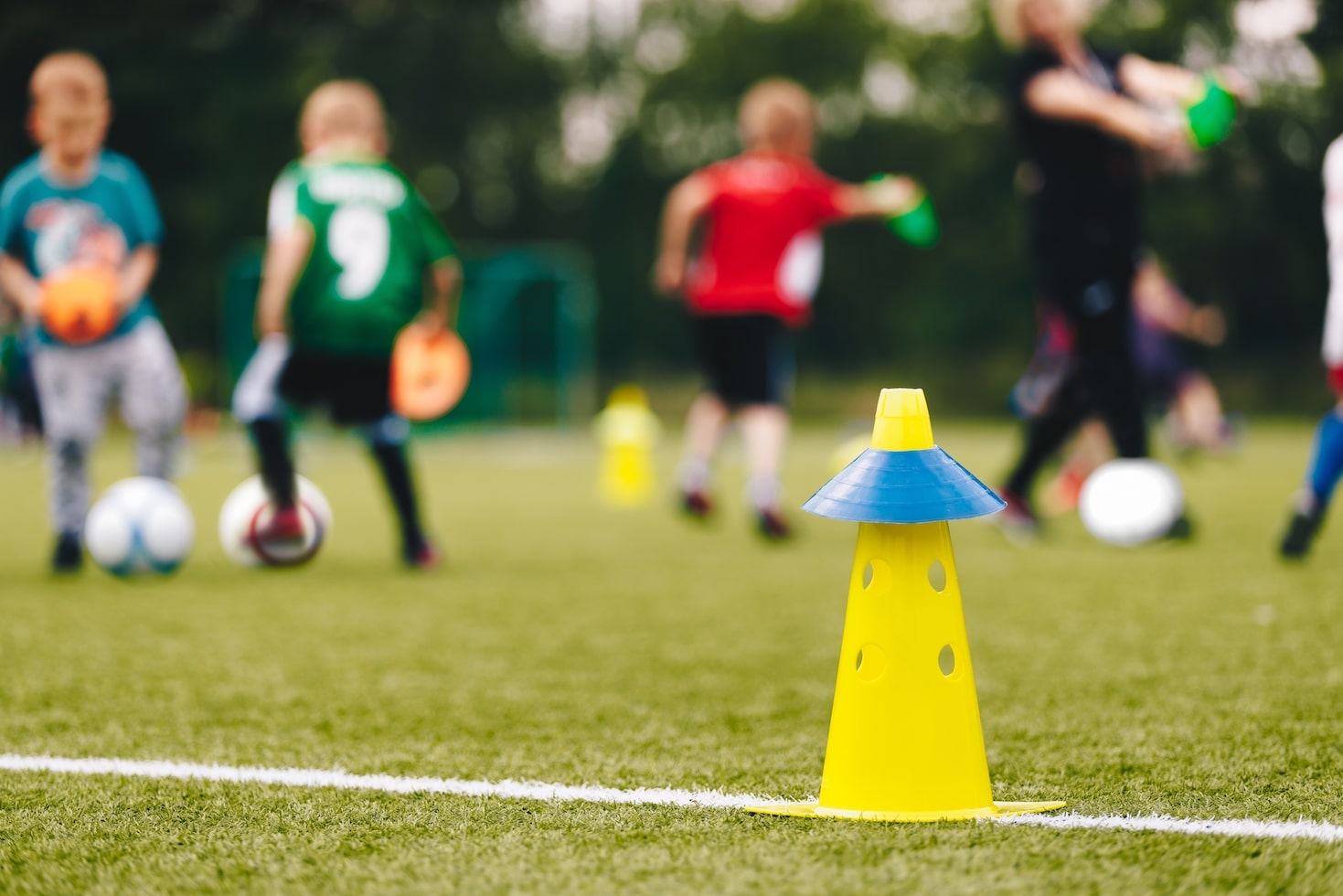
The end result? Soccer coaches who emphasize first touch control, one-two combinations, speed, and agility during wall passing drills will see improved performance from their players on match day.
Two-Touch Passing
- Decision Making: Two-touch passing drills help players improve their decision-making skills on the field. By limiting the number of touches, players have to think quickly and choose the best pass option.
- Quick Transition Play: Two-touch passing drills also emphasize quick transition play. Players learn how to receive and release the ball efficiently, allowing for faster counterattacks or defensive turnovers.
- Creating Space: Another benefit of two-touch passing is that it encourages players to create space on the field. With limited time and touches available, players must constantly move into open areas to receive a pass or make themselves available for a teammate.
Shooting Drills
One-on-One Shooting
Dribbling past a defender and shooting on goal can be a challenging task in one-on-one situations. To succeed, players must master their dribbling skills while maintaining control of the ball, allowing them to create openings for shots. Developing accuracy and power is crucial for scoring goals in tight one-on-one scenarios. Coaches can encourage players to use proper technique and body positioning to ensure their shots are precise and forceful.
- Use quick changes of direction to confuse the defender
- Maintain close control of the ball while dribbling
- Look for gaps or weaknesses in the defender's positioning
- Utilize feints or fake shots to deceive the opponent
- Practice shooting with both feet to increase versatility
- Focus on hitting specific target areas within the goal
- Incorporate strength training exercises to improve shot power
Shooting from Different Angles
Practicing shots from the left and right side of the goal can significantly improve a player's accuracy. By training players to shoot accurately when approaching from different angles, they develop a better understanding of how to adjust their technique for each situation. One key aspect is improving technique when shooting across the body, as this allows players to maintain control and power in their shots regardless of their position on the field.
Penalty Kick Practice
Teaching proper penalty kick techniques and strategies is crucial for players to succeed in high-pressure situations. Coaches should emphasize the importance of a solid approach, correct body positioning, and accurate shot placement. By incorporating drills that focus on these key elements, players can develop their skills and increase their chances of scoring past goalkeepers during penalty kicks.
Simulating pressure situations during penalty kicks helps players become more comfortable with performing under stress. Coaches can create game-like scenarios by adding distractions or time constraints to practice sessions. This will challenge players to maintain focus and composure while executing penalty kicks, preparing them for real match situations where there is often intense pressure.
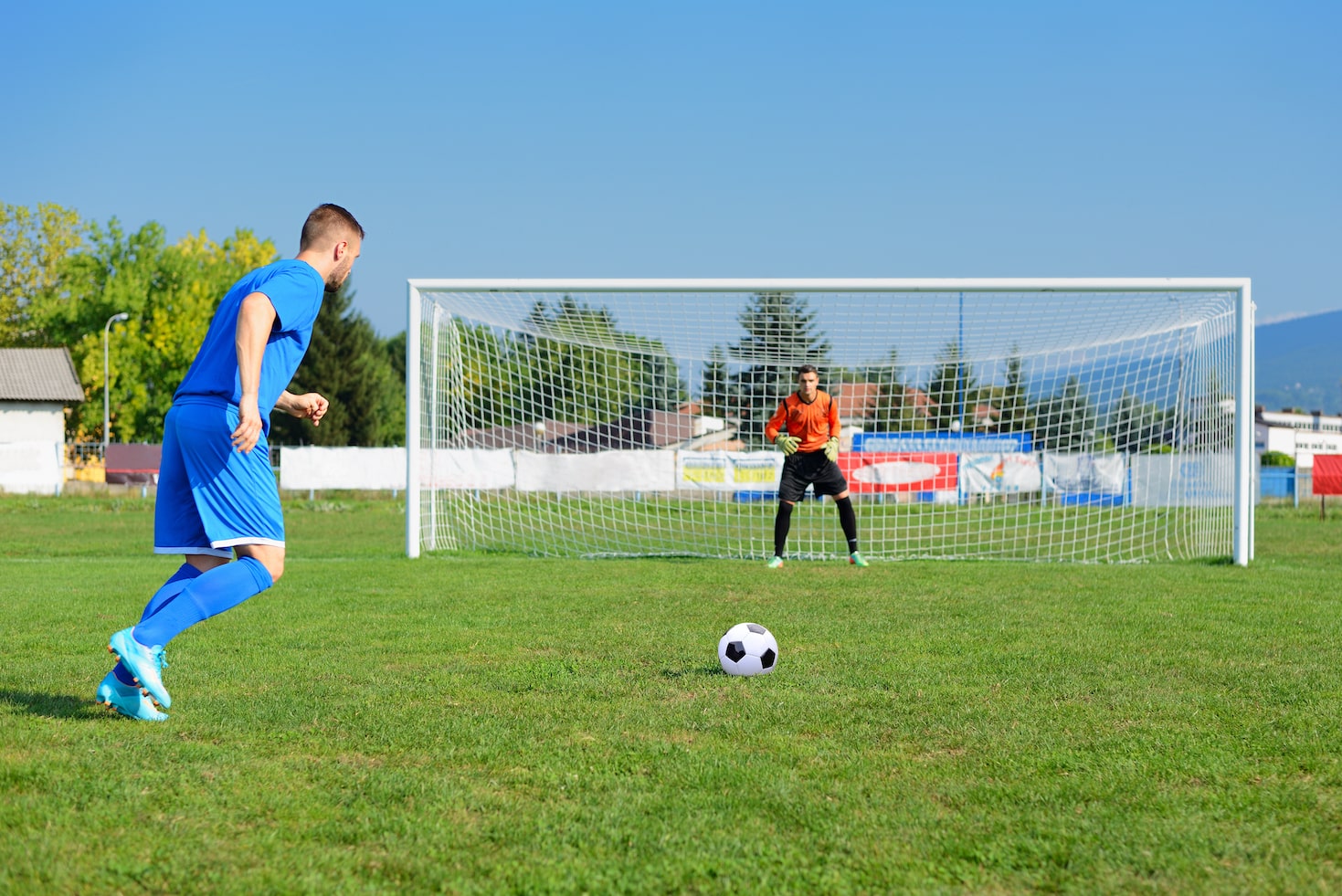
Developing consistency in penalty kick execution requires repetition and attention to detail. Coaches should encourage players to practice their technique regularly and provide constructive feedback to help them refine their skills. Emphasizing the importance of muscle memory through consistent practice will enable players to execute successful penalties consistently when it matters most.
Defensive Drills
1v1 Defending
Footwork and body positioning are essential in effective 1v1 defending. Focus on staying light on your feet, ready to react to the attacker's moves. Position yourself between the attacker and the goal, with a slight angle towards their weaker side if possible.
Anticipating the attacker's moves can give you an advantage in 1v1 situations. Pay attention to their body language and try to predict where they will go next. Stay focused and be prepared to quickly adjust your position or make a tackle based on their movements.
To force the attacker onto their weak side, use strategic positioning and pressure. Guide them towards areas of the field that limit their options, such as towards the side line or away from dangerous scoring opportunities. By forcing them onto their weaker foot or into less advantageous positions, you increase your chances of successfully defending against them.
Pressure and Cover
Communication between defenders is crucial in order to effectively apply pressure on the ball carrier and cover passing lanes. Here are some key points to focus on during training sessions:
- Encourage constant communication between defenders, using clear and concise instructions.
- Emphasize the importance of maintaining a compact defensive shape when applying pressure on the ball carrier.
- Teach defenders to anticipate passes and position themselves strategically to cover passing lanes.
By honing these skills through drills and exercises, your team will be better equipped to handle defensive situations and prevent opponents from creating scoring opportunities.
Defending in Numbers
Shifting as a unit to close down space requires the defenders to work together, moving in sync and communicating effectively. This helps prevent gaps from opening up, making it harder for the opposing team to penetrate through the defense and will result in lower risk crossing.
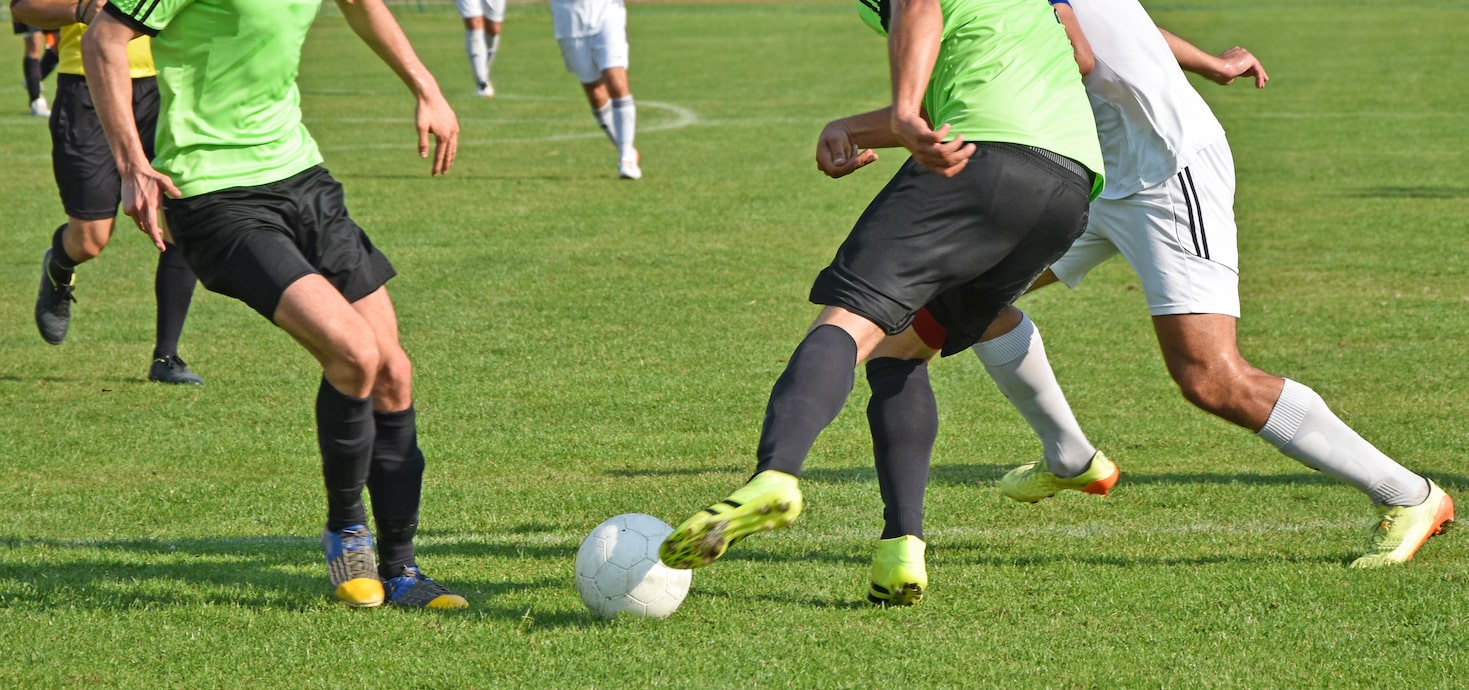
Tracking back quickly after losing possession is crucial in maintaining defensive shape and preventing counterattacks. Defenders must have the discipline and awareness to immediately retreat, ensuring they are well-positioned to nullify any potential threats.
Implementing a zonal marking system allows defenders to cover specific areas of the field rather than individual players. This ensures that even if an attacker switches positions or makes runs into different areas, there will always be defenders positioned strategically to intercept passes or apply pressure on them. Working collectively within this system enhances defensive stability and reduces chances for opponents' breakthroughs.
Conditioning Drills
Shuttle Runs
Shuttle Runs are an essential part of soccer training, focusing on agility and quickness. These drills help players improve their lateral movement, acceleration, and change of direction skills. Incorporating shuttle runs into your training sessions can greatly enhance players' overall performance on the field.
- Side-to-Side Shuttle: Set up two cones about 5 yards apart. Players start at one cone and shuffle sideways to touch the other cone before shuffling back to the starting point. Repeat for a set number of repetitions or time.
- Forward-Backward Shuttle: Place two cones approximately 10 yards apart. Players sprint forward from one cone to the other, touch it with their hand or foot, then quickly backpedal to the starting point. Repeat for multiple rounds.
- Diagonal Shuttle: Create a diagonal line using four cones placed in a zigzag pattern about 10 yards apart. Players sprint diagonally from one cone to another, touching each as they go until they reach the end of the line before returning back in reverse order.
Incorporating these shuttle run variations into your soccer training sessions will improve players' speed, agility when turning, and directional changes on the field while simulating game-like movements during practice drills.
Interval Training
High-Intensity Interval Sprints: Incorporate high-intensity sprint intervals into your soccer training for improved speed and explosiveness on the field. Set up markers at various distances and have players perform maximum effort sprints followed by short rest periods. This type of interval training mimics the demands of a soccer match, enhancing both aerobic and anaerobic endurance.
Circuit Training with Different Stations: Create a circuit training session using different stations that focus on various aspects of soccer skills such as passing, shooting, dribbling, and agility. Assign players to each station where they perform specific drills for a set amount of time before rotating to the next station. This type of interval training not only improves technical abilities but also boosts cardiovascular fitness.
Tabata Intervals with Soccer-Specific Exercises: Implement Tabata intervals into your soccer conditioning routine using exercises tailored specifically for the sport. Choose exercises like burpees, ladder drills, or cone agility drills and perform them at maximum intensity for 20 seconds followed by 10 seconds of rest. Repeat this cycle for several rounds to improve overall fitness levels required for quick bursts during matches.
Remember to always adapt these interval training methods based on the age and skill level of your players while ensuring proper warm-up and cool-down protocols are in place to prevent injuries.


Improve Your GameJust 1.99 p/m
Exclusive drills and sessions, get involved today!
- 100’s of Drills
- Coach to Camera Videos
- Sessions from Pro’s
- Industry Leading Advice
Conclusion
In conclusion, incorporating basic drills into your soccer training sessions is essential for improving players' skills and overall performance on the field. Whether it's shuttle runs, interval training, or other exercises, these drills target different aspects of the game and help players enhance their speed, agility, endurance, and technical abilities.
By including shuttle runs such as the straight-line shuttle and diagonal shuttle, players can work on their speed, acceleration, and directional changes. These drills simulate game-like movements, allowing players to improve their on-field performance. Additionally, incorporating interval training into your sessions, such as high-intensity sprints or circuit training, helps improve both aerobic and anaerobic endurance, crucial for the demands of a soccer match.
Lastly, implementing Tabata intervals with soccer-specific exercises adds an extra level of intensity and specificity to your conditioning routine. By performing exercises like burpees or cone agility drills at maximum intensity, players can enhance their overall fitness levels and improve their ability to perform quick bursts of activity during matches.
Remember, it's important to adapt these drills and training methods based on the age and skill level of your players. And always prioritize proper warm-up and cool-down protocols to prevent injuries. So, go ahead and incorporate these basic drills into your soccer coaching routine, and watch your players improve their skills and performance on the field.

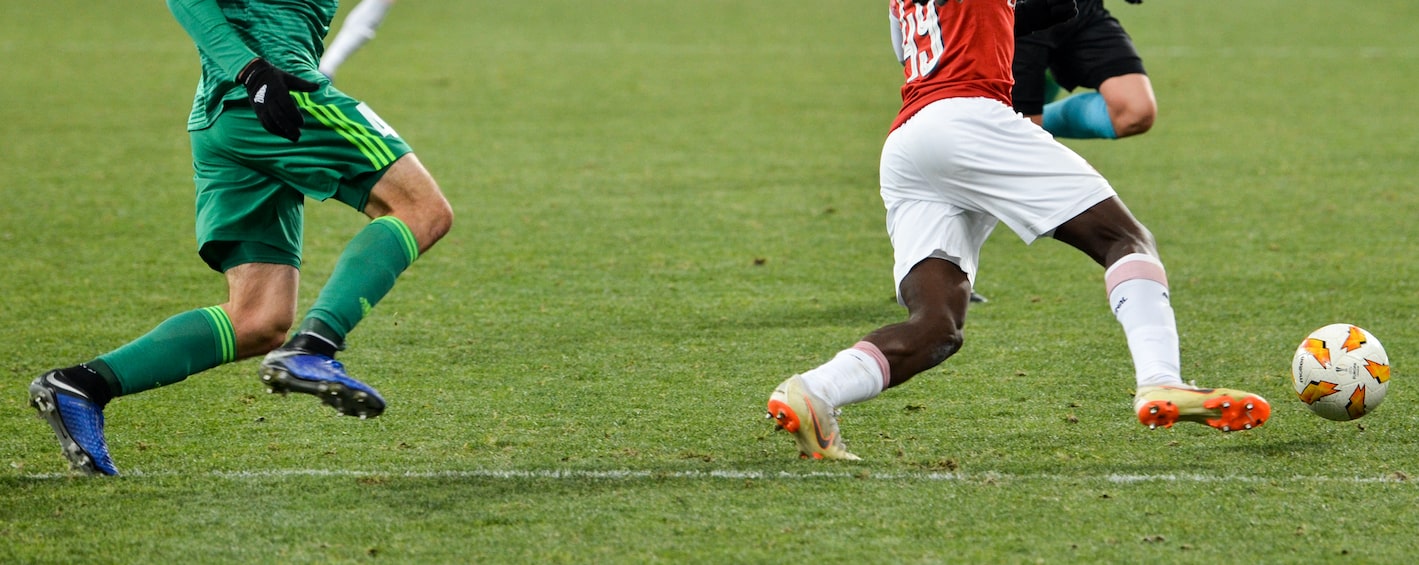
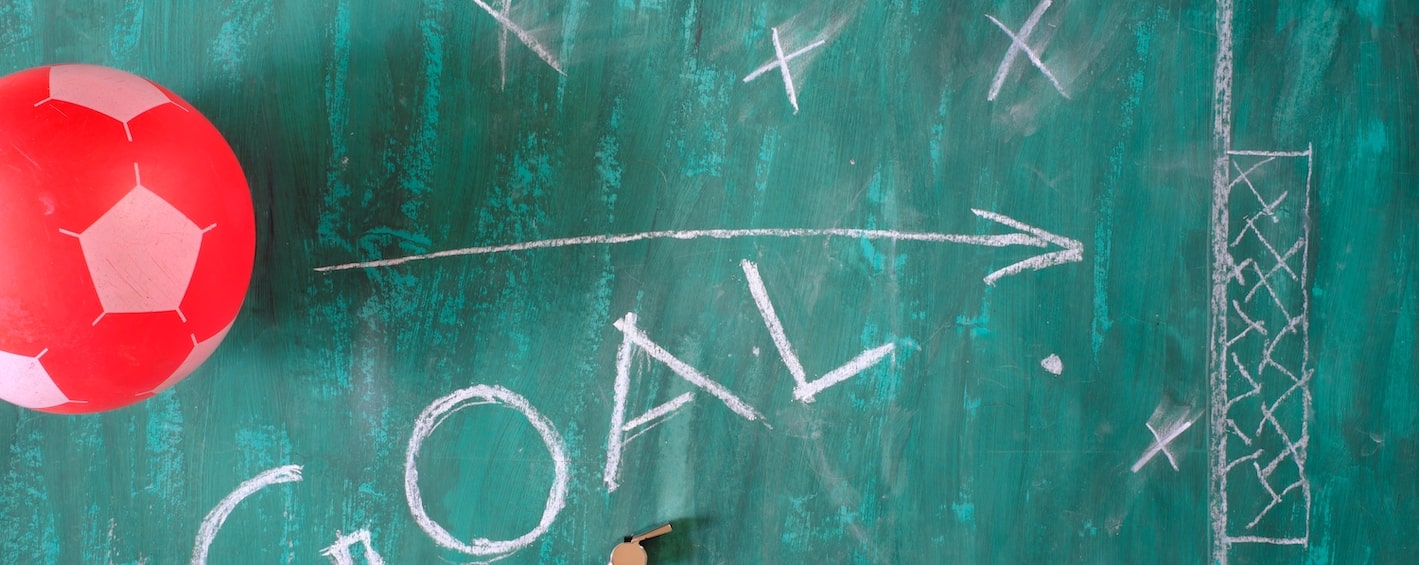
Cupello
Rethinking soccer coaching via our industry leading tools. Built to offer effective coaching development solutions for players and coaches of all levels.